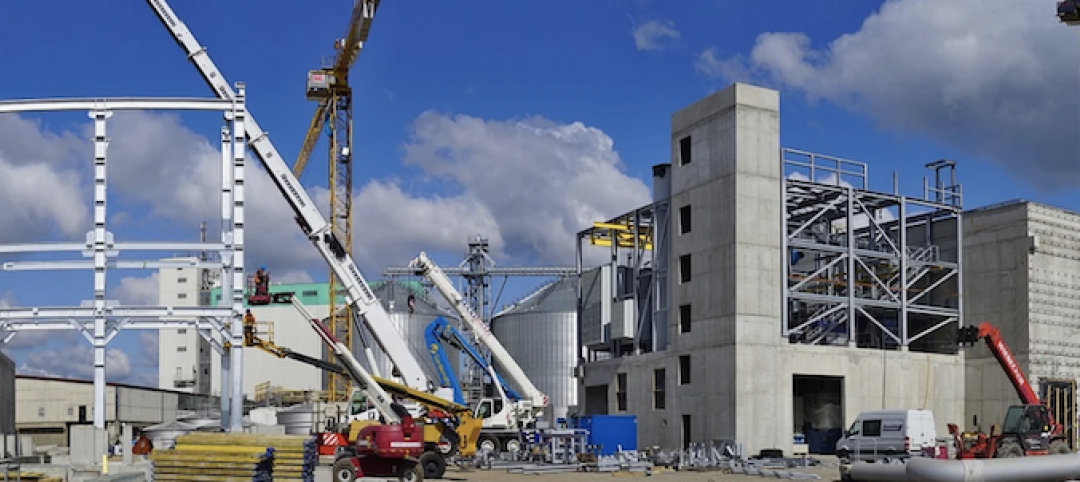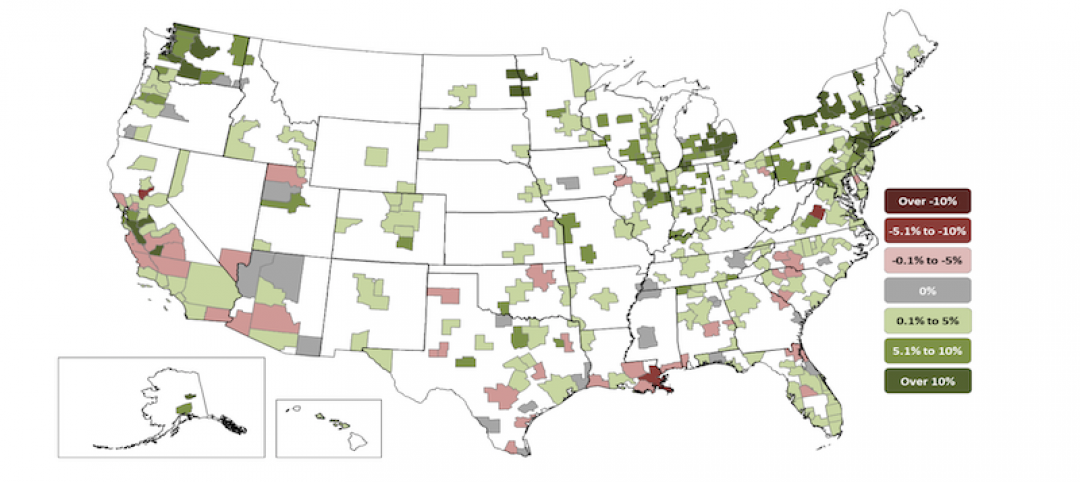Nonresidential construction spending in April declined for the fifth-straight month to a two-year low as demand waned for numerous public and private project categories in the face of lengthening production and delivery times for materials, along with fast-rising prices for many items, according to an analysis of new federal construction spending data by the Associated General Contractors of America. Officials with the association urged the President and Congress to boost infrastructure investments, remove tariffs on key materials and take steps to address production and deliver backups for key construction supplies.
“Both public and private nonresidential spending overall continued to shrink in April, despite a pickup in a few spending categories from March,” said Ken Simonson, the association’s chief economist. “Ever-growing delays and uncertainty regarding backlogs and delivery times for key materials, as well as shortages and record prices, are likely to make even more project owners hesitant to commit to new work.”
Construction spending in April totaled $1.52 trillion at a seasonally adjusted annual rate, an increase of 0.2% from the pace in March and 9.8% higher than the pandemic-depressed rate in April 2020. As has been true for the past several months, the year-over-year gain was limited to residential construction, Simonson noted. That segment climbed 1.0% for the month and 29.5% year-over-year. Meanwhile, combined private and public nonresidential spending declined 0.5% from March—the fifth consecutive monthly decrease—and 3.9% over 12 months, to the lowest annual rate since December 2018.
Private nonresidential construction spending fell 0.5% from March to April and 4.8% since April 2020, with year-over-year decreases in 10 out of 11 subsegments. The largest private nonresidential category, power construction, plunged 7.1% year-over-year and 1.8% from March to April. Among the other large private nonresidential project types, commercial construction—comprising retail, warehouse and farm structures—retreated 1.3% year-over-year despite a gain of 0.4% for the month. Manufacturing construction rose 0.6% from a year earlier and 0.4% from March. Office construction decreased 1.6 percent year-over-year but edged up 0.2 percent in April.
Public construction spending slipped 2.2% year-over-year and 0.6% for the month. Among the largest segments, highway and street construction declined 2.7% from a year earlier, although spending rose 0.6% for the month. Public educational construction decreased 4.0% year-over-year and 0.5% in April. Spending on transportation facilities fell1.9% over 12 months and 1.2% in April.
Association officials cautioned that a recent Commerce Department announcement that it intends to double the current tariff levels on Canadian lumber would further undermine nonresidential construction activity. They said the Biden administration should instead remove tariffs on lumber, steel and aluminum and work to ease production and shipping delays. Boosting infrastructure funding, which leaders of both parties have proposed, will also help, the construction officials added.
“The last thing construction workers need is for the Biden administration to double tariffs on lumber,” said Stephen E. Sandherr, the association’s chief executive officer. “Instead of making it even harder to build, the administration needs to ease supply backups, remove tariffs and pass a bipartisan infrastructure bill.”
Related Stories
Market Data | Aug 3, 2020
Construction spending decreases for fourth consecutive month in June
Association officials warn further contraction is likely unless federal government enacts prompt, major investment in infrastructure as state and local governments face deficits.
Market Data | Aug 3, 2020
6 must reads for the AEC industry today: August 3, 2020
The future is a number game for retail and restaurants and 5 reasons universities are renovating student housing.
Market Data | Jul 31, 2020
5 must reads for the AEC industry today: July 31, 2020
Vegas's newest resort and casino is packed with contactless technology and Mariott, Hilton, and IHG dominate the U.S. hotel construction pipeline.
Market Data | Jul 30, 2020
Marriott, Hilton, and IHG continue to dominate the U.S. hotel construction pipeline at Q2’20 close
Hilton’s Home2 Suites and IHG’s Holiday Inn Express continue to be the most prominent brands in the U.S. pipeline.
Market Data | Jul 30, 2020
7 must reads for the AEC industry today: July 30, 2020
Millennium Tower finally has a fix and construction costs decrease for the first time in 10 years.
Market Data | Jul 29, 2020
62% of metros shed construction jobs from June 2019 to June 2020 as Association calls for new infrastructure funding, other relief steps
New York City and Brockton-Bridgewater-Easton, Mass. have worst 12-month losses, while Austin and Walla Walla, Wash. top job gainers.
Market Data | Jul 29, 2020
6 must reads for the AEC industry today: July 29, 2020
The world's first net-zero airport and California utility adopts climate emergency declaration.
Market Data | Jul 28, 2020
For the fourth consecutive quarter, Los Angeles leads the U.S. hotel construction pipeline at the close of Q2’ 20
New York City continues to have the greatest number of projects under construction, with 106 projects/18,354 rooms.
Market Data | Jul 28, 2020
6 must reads for the AEC industry today: July 28, 2020
St. Petersburg Pier reconstruction completes and post-pandemic workplace design will not be the same for all.
Market Data | Jul 28, 2020
Senate Republicans' coronavirus relief measure includes provisions that will help hard-hit construction firms recover
The HEALS Act includes essential liability, workforce, financial & unemployment reforms, but association will work to get needed infrastructure investments included in final relief measure.

















